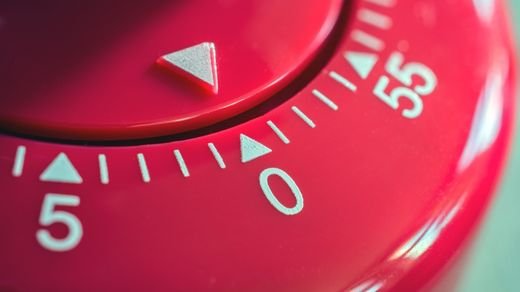In the pursuit of a healthier lifestyle, fitness enthusiasts and beginners alike often face a common challenge: tracking progress. Whether you’re aiming to lose weight, build muscle, or simply improve your overall well-being, monitoring your fitness journey is essential for motivation and achieving your goals. One effective tool for this purpose is timer In this article, we’ll explore how timers can be utilized to track your fitness progress, help you stay accountable, and ultimately lead you toward a healthier and fitter life.
The Importance of Tracking Fitness Progress
Tracking your fitness progress serves multiple vital functions in your wellness journey:
1. Motivation: Seeing tangible results can be incredibly motivating. When you track your progress and witness improvements in your strength, endurance, or body composition, it reinforces your commitment to your fitness goals.
2. Accountability: Monitoring your workouts and health habits helps you stay accountable to yourself. It’s a way to ensure that you’re consistently making efforts toward your desired outcomes.
3. Goal Setting: Accurate tracking provides valuable data to set realistic and achievable fitness goals. It allows you to adjust your goals based on your progress and limitations.
4. Optimization: Data-driven insights from tracking can help you optimize your fitness routine. You can identify which exercises or habits are working and which ones need adjustment.
5. Preventing Plateaus: Tracking helps you recognize when you’ve hit a plateau or when progress has slowed down. This awareness enables you to make necessary changes to overcome stagnation.
Timers as a Tracking Tool
While tracking fitness progress often involves various metrics, such as body measurements, weight, and photos, timers play a unique role in monitoring the time-related aspects of your workouts and habits. Here’s how timers can be beneficial:
1. Workout Duration: Timers help you measure the duration of your workouts accurately. Tracking the time spent on each exercise or the entire session can be vital for optimizing your training program.
2. Rest Intervals: Timed rest intervals are essential for recovery and progression. By using timers, you can ensure that your rest periods align with your training goals, whether it’s strength, hypertrophy, or endurance.
3. Interval Training: Interval workouts, such as High-Intensity Interval Training (HIIT), rely heavily on precise timing. Timers are indispensable for creating and executing interval routines effectively.
4. Nutrition Timing: Timers can help you maintain consistency in meal timing and nutrient intake, which can be crucial for supporting your fitness goals, whether it’s muscle gain, fat loss, or improved energy levels.
5. Sleep Tracking: Good sleep is a cornerstone of fitness and overall health. Timers can be used to monitor the duration and quality of your sleep, allowing you to identify and address sleep-related issues.
How to Use Timers for Fitness Tracking
Now that you understand the significance of timers in tracking your fitness progress, let’s explore how to effectively incorporate them into your routine:
1. Select the Right Timer: Choose a timer tool that suits your needs. You can use a simple stopwatch on your smartphone, fitness tracking apps with built-in timers, or dedicated fitness devices.
2. Workout Duration: Set timers to track the duration of your workouts. This includes both the total session time and the time spent on individual exercises or activities.
3. Rest Intervals: Determine the optimal rest intervals for your fitness goals. Use timers to ensure that your rest periods align with your training program. For instance, shorter rests for strength training and longer rests for hypertrophy.
4. Interval Workouts: If you incorporate interval training, program your timers to signal when to start and stop each interval. This keeps your workout structured and on track.
5. Meal Timing: Set timers to remind you of meal times and snack breaks. Consistent nutrition timing can help you manage your energy levels and support your fitness objectives.
6. Sleep Monitoring: Some fitness trackers and smartwatches offer sleep tracking features. Utilize these devices to monitor your sleep duration and quality. Make adjustments to your sleep routine based on the data collected.
7. Progress Tracking: Keep a record of your timer-tracked data. Whether it’s the duration of your workouts, rest intervals, or sleep patterns, having a log allows you to review your progress over time.
8. Adjustment and Optimization: Analyze your timer-tracked data regularly. If you notice patterns or trends in your workouts or habits, use this information to make adjustments and optimize your fitness routine.
Timers and High-Intensity Interval Training (HIIT)
High-Intensity Interval Training (HIIT) is a fitness strategy that has gained significant popularity due to its effectiveness in burning calories, improving cardiovascular fitness, and saving time. Timers play a central role in HIIT workouts. Here’s how they work together:
1. Set Work and Rest Intervals: In a typical HIIT session, you alternate between high-intensity exercise and rest or low-intensity recovery periods. Timers help you set precise work and rest intervals, ensuring that you adhere to the HIIT structure.
2. Progressive Overload: As you become fitter, you can adjust the duration of your work intervals or increase the intensity. Timers allow you to progressively overload your workouts, making them more challenging over time.
3. Consistency: HIIT relies on consistency and strict timing. Timers keep your intervals consistent, ensuring that you’re getting the most out of your high-intensity efforts.
4. Variety: HIIT can involve various exercises and routines. Timers can help you switch between exercises seamlessly and time your transitions accurately.
Final Thoughts
In your journey to better health and fitness, tracking your progress is essential for staying motivated and achieving your goals. Timers are versatile tools that can assist you in monitoring workout duration, rest intervals, meal timing, and even sleep patterns. By using timers effectively, you’ll not only stay accountable but also optimize




